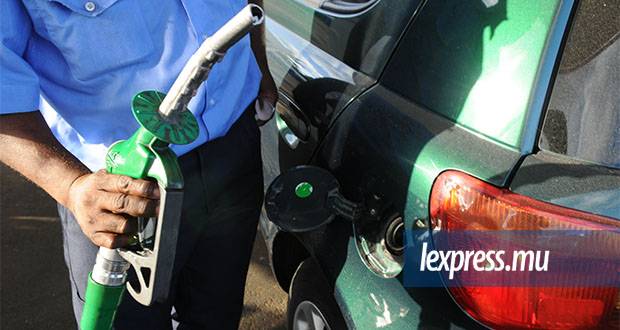Publicité
Aviation’s new light of fancy
Par
Partager cet article
Aviation’s new light of fancy

Financially, aviation has always been a dismal industry … despite the perceived glamour. In the jet age, spanning 60 years, its average profitability has been close to nil. This is even worse than it looks since zero profit is, in fact, negative: investors could have earned more, without risk, by just putting their money in government bonds or savings accounts, for example. Thus, US$1,000 invested in 1950 at an annual risk-free rate of 5% would be worth almost 20 times today at US$18,679. Had you bravely invested in US$1,000 in aviation instead, you would be left with … US$1,000 today – only US$300 in real terms, if annual inflation averaged say, only 2% over those past 60 years. And some airlines’ shares have performed even well below 0% during the last decade…
However, precisely at a time when a double-dip recession is more and more likely, both Boeing and Airbus have recently improved their already rosy outlook to 2030. They believe that, over the next 20 years, the world will need around 30,000 planes in total. Why this discrepancy between past trends and the future? It still does not mean that airlines will make money but aviation has learnt many lessons and, more importantly, is now applying them.
1. First, an external factor. Usually, air transport grows at twice the rate of economic growth. Thus, with a world annual growth rate forecast of around 4% over the next 20 years, Boeing predicts air transport to grow by 7%. Economic growth crucially helps to strengthen demand. The Asia-Pacific market will become the largest aviation market by number of passengers in a few years, eclipsing Europe and even the US.
2. From the above, it ensues that larger airlines (eg. Emirates) will need larger capacity aircraft (eg. the A380), ie. economies of scale. In a high fixed-cost industry, this is a critical lever for profitability.
3. IATA has implemented various cost-cutting projects, under the ‘StB’ umbrella (Simplifying the Business). Traditionally, aviation, despite its perceived glamour, is populated by many dinosaurs, who have personal interests in keeping organisations, systems and processes as opaque as possible, to safeguard their jobs. This, in economic terms, is the ‘consumer surplus’ that is stolen from consumers and pocketed by those aviation middlemen. IATA identified various areas whereby it could simplify aviation processes be it e-ticket, electronic baggage identification or smoothing air traffic management - and pushed hard for airlines and countries to adopt them.
4. The internet has put information in the hands of passengers, and especially fares. By making it easier to shop around, passengers make airlines compete harder. Technology has also allowed for the elimination of paper tickets, a thick wad of unnecessary documents costing around US$20 to produce - but of no value whatsoever to the consumer.
5. Low cost airlines go even further: they are ticketless. This is not to be confused with e-tickets, which are modern, electronic versions of a ticket, which resides in the airlines systems and in Global Distribution Systems (GDS) such as Amadeus. Ticketless really means that low-cost airlines have no traces of a ticket: not even electronic, not even in the booking system. The passenger is just given a reference number and shows his/her ID as proof at boarding point.
6. The advent of low-cost airlines has turned the staid traditional airline business model on its head. Many passengers would rather not have a cold sandwich or a newspaper, especially on short-haul flights. These ‘frills’ seem free but are not. As Stelios (the Greek founder of easyJet) famously said: ‘there is no such thing as a free lunch in this world’. When many traditional airlines were burning money, and hence destroying shareholder value, he turned a GBP5m investment into GBP1bn in 10 years by copying Southwest (the first and largest low-cost airline, based in Dallas).
7. Spurred by the spectre of Southwest et al, which now has a fleet of 550 aircraft, traditional airlines have copied a few of the low-cost tricks. They now sell seats online, directly to passengers, getting rid of costly intermediaries like travel agents.
8. The more oil prices increase, the better sense it makes to retire old, gas-guzzling aircraft. American Airlines have just announced a massive order of 460 aircraft (the largest in aviation history) to revamp its fleet. New aircraft are cheaper to operate and give better service to passengers. The Economist mentioned last week that over the last ten years, whilst passenger-miles had increased 45%, fuel use had gone up by only 3%. The new A320-neo, became an instant sensation this year by attracting orders for almost 1,000 units because it promises to lower fuel consumption by as much as 15%.
9. Technology and better revenue-management processes have allowed airlines to better fill up their seats. Again, The Economist showed that passenger load factor had increased by 20 points between 1970 and 2010, from 55% to more than 75%. This greatly increases the marginal revenue of airlines.
10. Better capacity management also helps. On ‘thin’ routes, it makes sense for airlines to downsize their equipment, using a B777 instead of a B747, for example. The former is a lower capacity, twin-engined aircraft as opposed to the four-engined B747. The replacement of the A330 by the A340 follows the same logic.
Any industry, even aviation, can re-invent itself. However, headwinds are still present. Aviation is a polluting activity. Jetfuel is usually not taxed in many countries (though many other taxes are levied on passengers). The carbon tax for airlines is becoming a reality. If the double-dip recession happens, it will hit airlines really hard. Due to its ‘volatile’ performance (an upgrade from ‘dismal’!), airline shares are usually trading shares – not to be kept for the long term. Nevertheless, some champions are emerging. These are not only the major low-cost airlines, which have been steadily profitable (a small low-cost airline is an oxymoron). Major Middle-East carriers are also claiming they are profitable and some may launch IPOs in the coming years. But, the golden investment caveat holds even more for airlines: the value of investment may go up as well as down.
Fouad Diouman
fdiouman@hotmail.com
Publicité
Les plus récents






